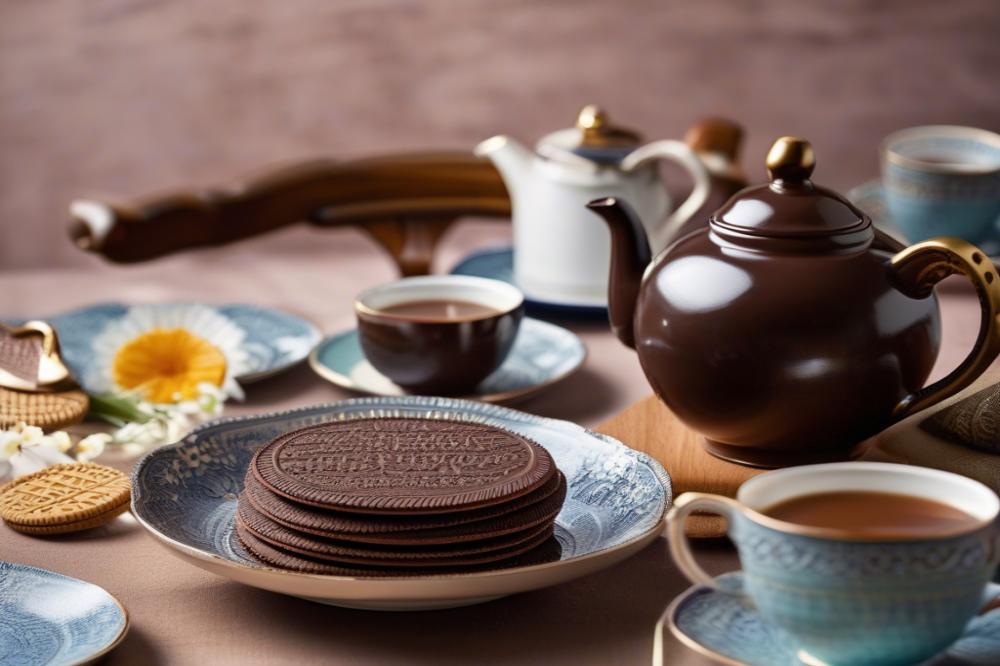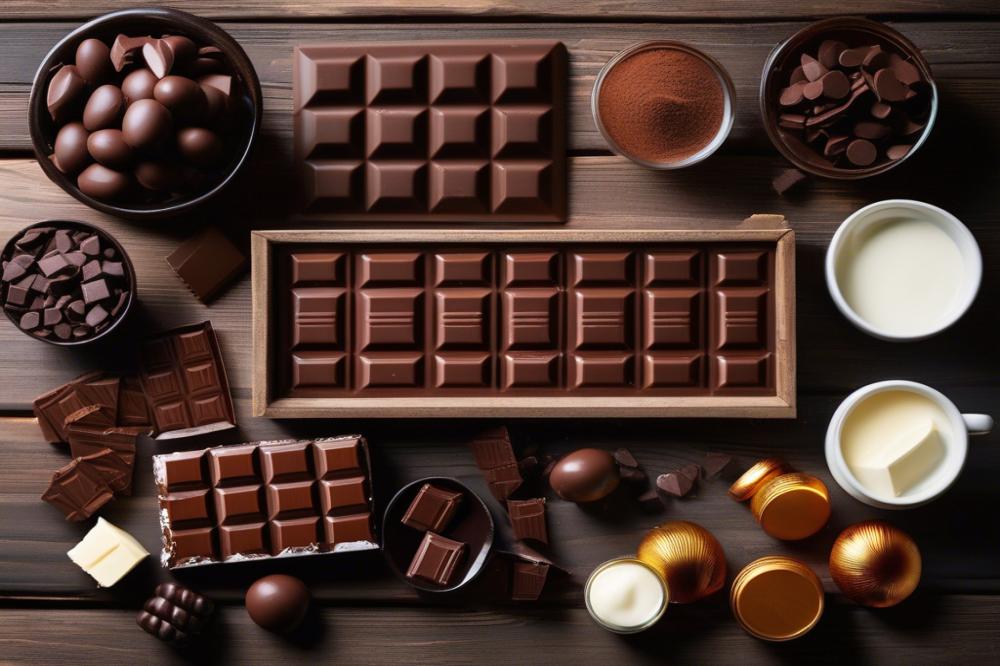The Endearing Charm of Chocolate Digestives
The chocolate digestive biscuit stands out as a beloved snack for many. Popular in British culture, these treats are often a staple during tea time. When accompanied by a warm cup of tea, they transform simple moments into delightful experiences. Few biscuits can boast the same level of affection among enthusiasts. Their unique combination of sweetness and chocolate flavor delights the taste buds, ensuring a satisfying bite.
A wide range of biscuit varieties adds to the culinary landscape. From buttery shortbreads to crisp ginger snaps, each offers a different experience. Nonetheless, chocolate digestives maintain a special place among popular treats. The crunchiness of the biscuit combined with the smooth layer of chocolate creates a harmonious balance. This delightful texture is hard to resist, which contributes to their widespread appeal.
Baking these biscuits typically involves simple yet quality ingredients. The rich chocolate coating complements the wholesome base, enhancing the overall flavor profile. Often enjoyed straight from the packet, they can also be dunked in tea for an added twist. This ritual has become synonymous with British tea culture, capturing both tradition and comfort in a single bite.
The Origins of digestive biscuits

The story of digestive biscuits begins in the 19th century. These treats were invented in Scotland by two doctors who believed in the health benefits of certain ingredients. They aimed to create a biscuit that could aid digestion, hence the name.
Wholemeal flour played a crucial role in their original recipe. This ingredient was valued for its higher fiber content, which was thought to promote good digestive health. Along with sugar and baking soda, the combination created a hearty snack that felt wholesome.
As time went on, these biscuits gained popularity in British households. Their simple, yet satisfying texture appealed to many. Often served during tea time, they became a staple presence at the table, accompanying the beloved experience of enjoying a warm cup of tea.
Additionally, biscuit varieties soon emerged. Products like chocolate digestives were introduced, drawing more fans to the snack. The rich, chocolate covering added a delightful sweetness without overpowering the original flavor profile of the biscuit.
Over the years, the appeal of these popular treats only grew. Families began to see them not just as a healthful choice, but also as a comforting indulgence. The evolution from a health-focused creation to a beloved snack illustrates how food can adapt along with our preferences.
Even today, the balance of flavor and texture remains key to their charm. Whether enjoyed plain or covered in chocolate, digestive biscuits hold a special place in the hearts of many. They embody a mix of tradition and modern taste, making them a lasting favorite.
What Makes Digestive Biscuits So Loved

The enduring popularity of digestive biscuits stems from their satisfying crunch. Each bite offers a delightful texture that appeals to many snack enthusiasts. A perfect balance of sweetness enhances the experience, making them enjoyable without being overly sugary. These biscuits also shine as versatile companions, fitting seamlessly into everyday life.
During British tea time, biscuits play a crucial role. They complement a hot cup of tea or coffee wonderfully. Dunking a biscuit adds a layer of flavor that many find irresistible. Choices abound with different biscuit varieties, but the classic maintains a special place in hearts and homes.
Comfort eating often ties into the enjoyment of these treats. People turn to them for solace during stressful times. The combination of simple ingredients reflects a familiar taste that brings back memories. Chocolate digestives, for instance, elevate the experience further, offering a rich, decadent option for lovers of sweet flavors.
Flavor profiles of these snacks range from mildly sweet to deeply chocolatey, catering to diverse tastes. Some enjoy them plain, while others revel in their chocolate-coated siblings. Baking these biscuits at home can create a sense of warmth and nostalgia that quick snacks simply cannot match.
Ultimately, they are more than mere snacks. Popular treats like these evoke comfort, celebration, and connection. Whether enjoyed alone or shared with others, digestive biscuits remain a timeless favorite across generations.
Ingredients that Create the Chocolatey Experience

When you think of a classic British tea time, biscuits often come to mind. Traditional digestive biscuits have their roots in simple, wholesome ingredients. Primarily, wheat flour forms the base of these beloved snacks. This flour contributes to the biscuit’s structure, giving it the right amount of crunch and chewiness.
Another essential ingredient is sugar, which plays a vital role in the overall flavor profile. This sweetness balances the slightly salty taste of the flour. For those who enjoy chocolate digestives, cocoa powder or chocolate coating is introduced. This addition elevates the experience, providing a rich and creamy texture.
The interaction between the flour and sugar also affects how these biscuit varieties crumble in your mouth. A well-baked digestive should not be too hard; instead, it should melt pleasantly. On the other hand, chocolate adds a delightful twist. It creates a contrasting layer of flavor that makes each bite more indulgent.
Baking the digestives to a golden hue enhances their attractiveness. The warmth from the oven brings out nutty flavors within the flour too. Chocolate digestives, with their glossy finish, catch the eye instantly. They invite you in with the promise of a sweet escape alongside your cup of tea.
The harmony of ingredients results in a unique experience. Each component, from flour to sugar to chocolate, complements the others. This blend reflects a long-standing tradition of crafting popular treats that many adore. Snack time just wouldn’t be the same without them.
Baking Techniques for Perfect Digestive Biscuits
The process of baking is crucial for achieving the right texture in these beloved snacks. Traditional methods often involve a simple combination of flour, sugar, and fats. The classic recipe has been cherished by many for generations, producing a sturdy yet pleasant biscuit. In contrast, modern adaptations sometimes introduce additional ingredients. Variants may include gluten-free options or new flavorings that cater to different tastes and preferences.
Baking time and temperature play a key role in the final product. A precise timing can create the ideal crunch, crucial for the experience of enjoying this treat with a cup of tea. Too little time in the oven can result in undercooked biscuits that crumble too easily. On the other hand, excessive heat might lead to an overly hard texture, making them less enjoyable. Finding that balance is a trial and error process for many bakers.
The incorporation of chocolate has changed the landscape of these biscuits significantly. Chocolate digestives are a popular variation, offering a sweet and rich flavor profile. This change not only enhances the taste but also adds a delightful twist to the traditional snack. The melting goodness of chocolate combined with the crunch of the biscuit makes for a memorable treat during British tea time.
Beyond flavor, the selection of ingredients affects texture as well. Whole wheat flour is often used, giving these biscuits a hearty body. The type of fat—be it butter or vegetable oil—can influence both taste and crunch as well. Experimentation leads bakers to discover different ways to achieve both sweetness and texture, tailoring each batch to their liking.
For many, the enjoyment of these biscuits stems from their versatility. They can be paired with a wide range of beverages or served alongside other biscuit varieties during gatherings. Whether enjoyed plain or with chocolate, they have earned their place among popular treats. The right baking techniques can elevate this classic snack into something exceptional.
The Rise of Chocolate Digestives in Popular Culture
Chocolate digestives hold a special place in the hearts of many, especially in Britain. The appeal of these biscuits is not only in their taste but also in their presence in daily life. Often enjoyed with a cup of tea, they have become a staple during British tea time. Their unique texture and perfect balance of sweetness make them a popular choice for snacks.
Media and advertisements have played a key role in elevating chocolate digestives beyond mere snacks. Commercials often portray cozy scenes, featuring individuals taking a moment to enjoy their favorite treat. Brands use these images to associate their products with comfort and relaxation. Such marketing strategies have helped solidify the biscuit’s status as a symbol of indulgence.
Across the years, many biscuit varieties have emerged from classic recipes. Brands like McVitie’s and Cadbury have introduced their versions of this beloved treat. McVitie’s has even released variations with different chocolate coatings and flavors. This evolution shows how manufacturers adapt to changing tastes while sticking to traditional baking methods.
Popularity extends beyond the United Kingdom. Chocolate digestives have made their way into international markets. Many people enjoy them as a delightful snack or treat. The appeal of the chocolate and biscuit experience resonates with diverse cultures. Their flavor profile, combining rich chocolate with a crumbly base, attracts taste buds globally.
Social platforms and food blogs often spotlight chocolate digestives. People share recipes that include them as ingredients in desserts, enhancing their cultural significance. Various inspirations arise, turning these biscuits into something greater than a simple snack. This versatility speaks to the enduring love for chocolate digestives.
Overall, the cultural relevance of these popular treats is evident. They reflect comfort and joy, becoming a part of social gatherings and personal indulgences. As new flavors and brands continue to emerge, chocolate digestives remain a cherished item on the shelves. Their place in popular culture tells a story of tradition, adaptation, and widespread appreciation.
Wrapping Up the Love for Chocolaty Delights
People have a special fondness for these biscuits, and it is easy to see why. Their balance of sweetness and crunch has captured hearts for generations. Chocolatey variations add an extra layer of pleasure. Dipping them in tea enhances their flavor profile. At British tea time, few snacks evoke the same warmth and comfort.
A rich history backs this beloved treat, originating as a simple digestive aid. Over time, they evolved into a popular snack enjoyed by all ages. Many indulge in different biscuit varieties, each offering a distinct taste experience. Whether enjoyed plain or chocolate-coated, they hold a special place in the snack culture.
Serving as a delightful accompaniment to afternoon tea, they inspire moments of connection. Sharing about them often ignites nostalgic conversations among friends and family. Beyond personal memories, they represent a charming part of British heritage.
As you savor these treats, consider enjoying them in various ways. Whether paired with a hot beverage or on their own, there’s no wrong way to appreciate these delights. Embrace their history and rich flavors, letting each bite bring joy to your day.



